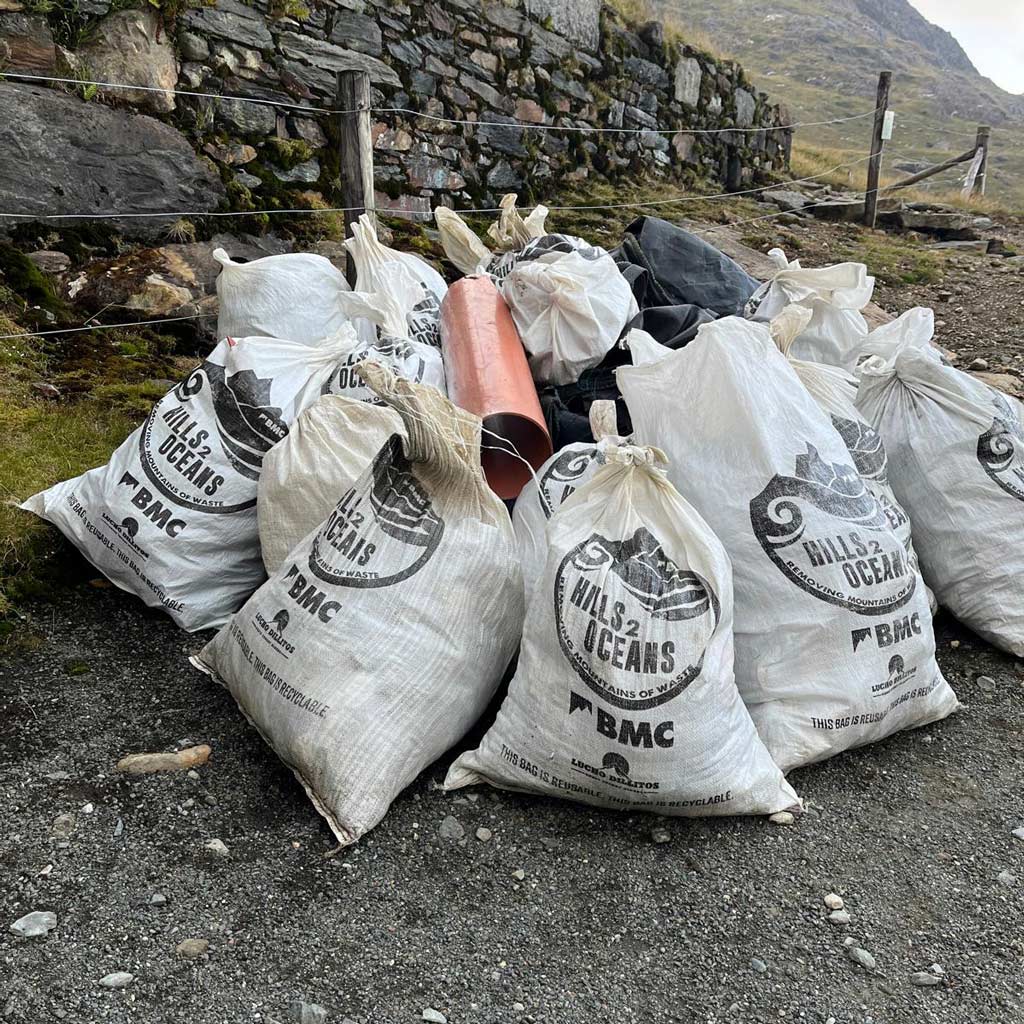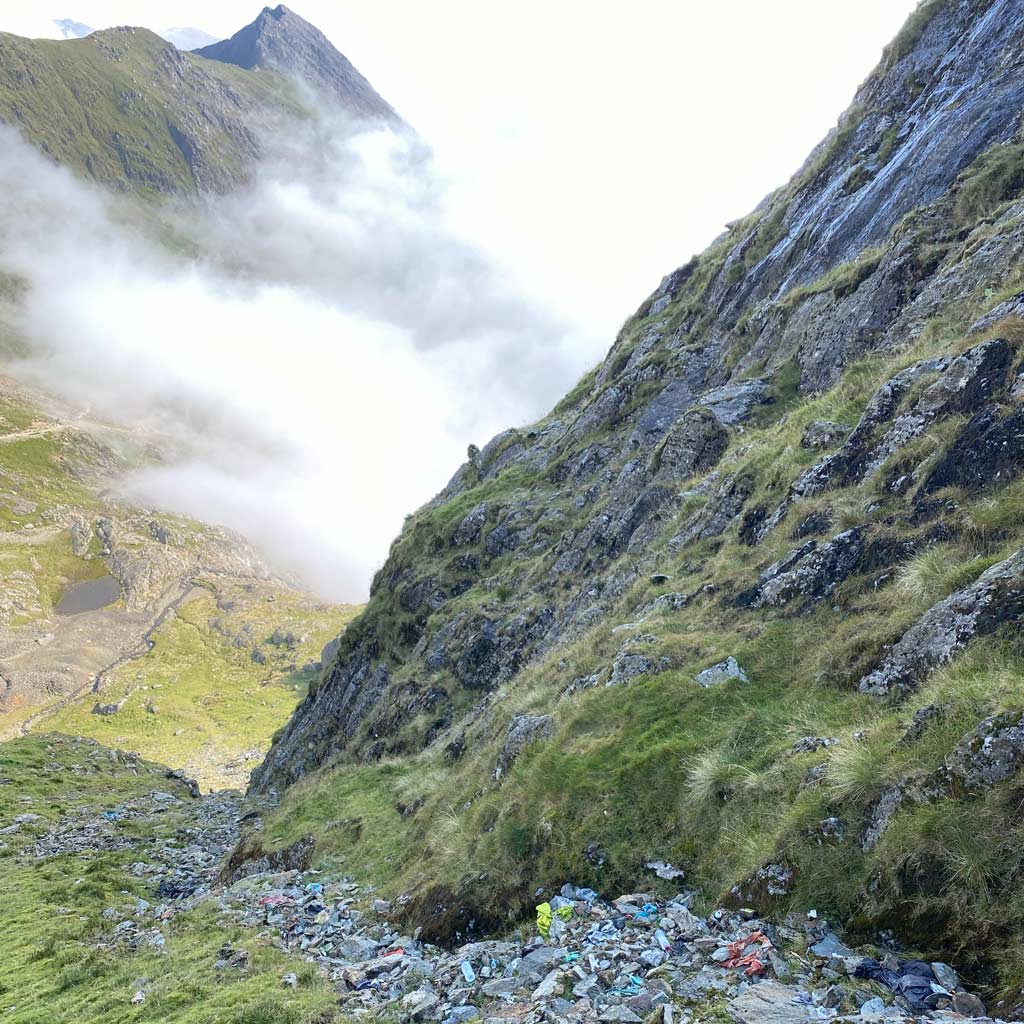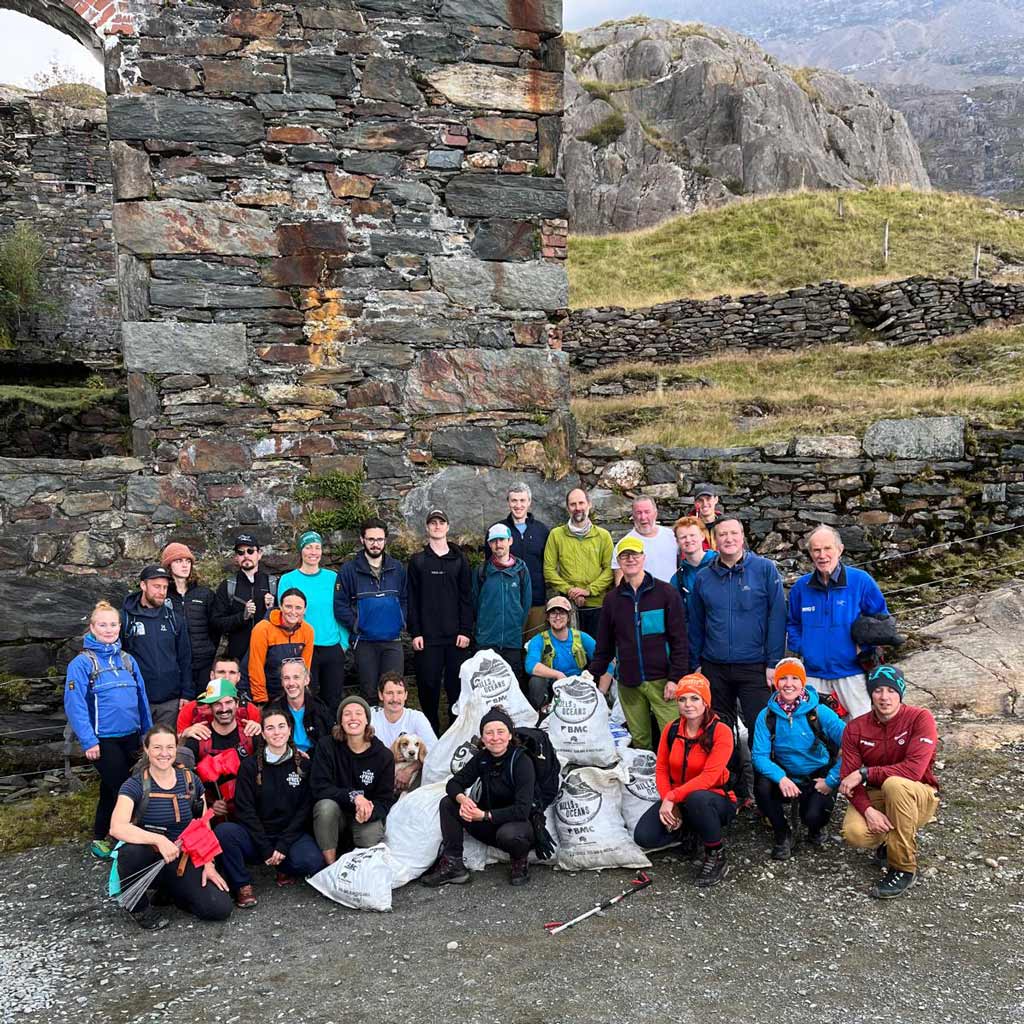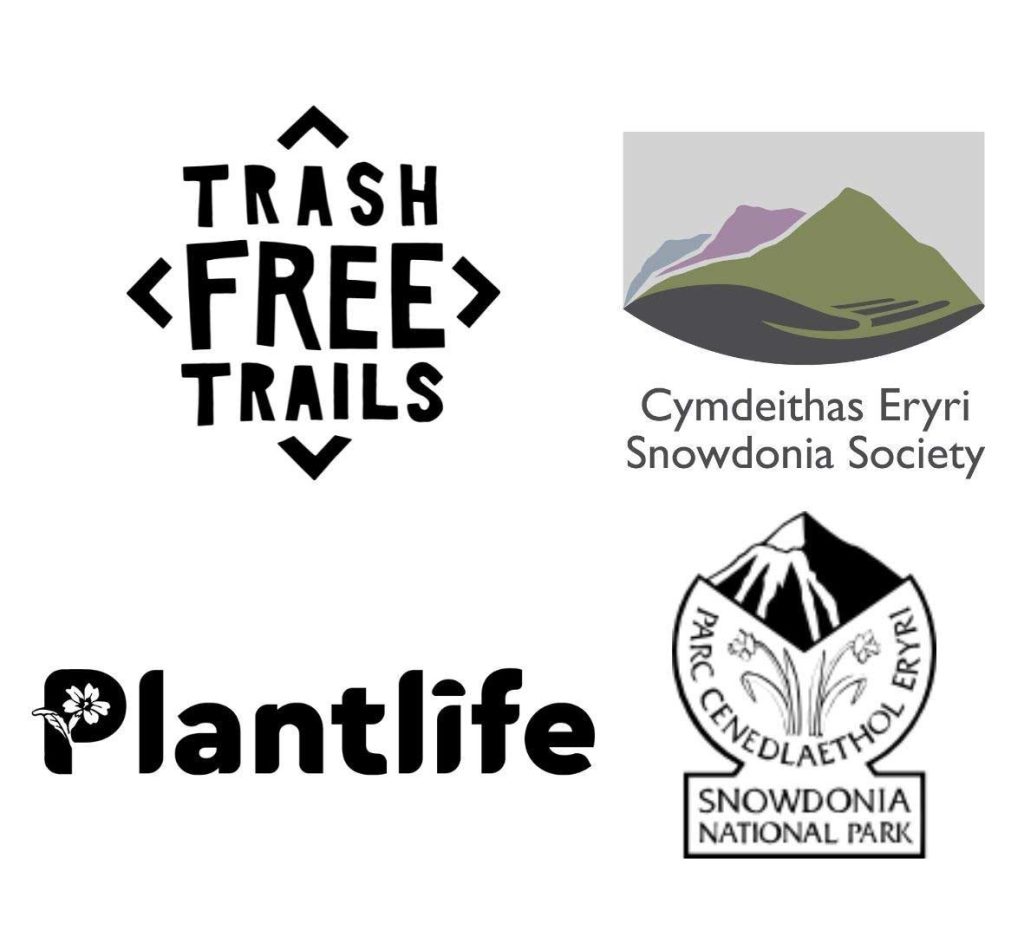Climbers performing technical clean-ups to preserve precious environments
PROJECT TITLE
Yr Wyddfa Big Clean Up
NAME OF ORGANISATION
British Mountaineering Council
Snapshot
The Yr Wyddfa Big (Snowdon) Clean Up is first and foremost an effort to remove tonnes of waste off of the highest peak in Wales, including nearby gullies and cwm. Due to the complex, vertical terrain, clearing the area has historically been difficult. By abseiling down, experienced climbers have a unique opportunity to contribute to the Big Clean Up. As well as actively clearing the area, one of the key areas of work has been education around the environmental impact of littering in such a wild and beautiful landscape.
View of MPA Assessor
The project has a dual focus on immediate pollution control by mountain walkers, in particular of single use waste, and to use the results thereof in education and public awareness programmes in ways that will contribute to more enduring pollution control in mountain areas, both locally and globally.
Project Objectives and Vision
The project is being undertaken on Clogwyn Y Garnedd, one of the cliff faces on Yr Wyddfa (Snowdon), the highest peak in Wales, UK. An estimated 700,000 people walk up Yr Wyddfa every year, making it one of the busiest mountains in the world. As well as walkers making their way past Clogwyn Y Garnedd to the summit, this cliff is also a popular winter climbing venue, with Trinity Face one of the most popular areas for winter climbing in Wales. The topography of the cliff has meant that due to prevailing westerly winds, anything dropped or left near the summit inevitably ends up being blown into the gullies or cwm below.
Due to the popularity of climbing Yr Wyddfa, single-use pollution has now filled many of the gullies on Trinity Face, creating an eyesore within the National Park, and damaging the wildlife there. The face itself is a Site of Special Scientific Interest and home to a host of Arctic Alpine species, both plants and invertebrates, one of the most renowned being the Snowdon Rainbow Bettle. Due to the complex, vertical terrain, clearing the area has historically been difficult. Efforts by other groups have been made in the past to clear the cwm below, however, to our knowledge no one has abseiled down the gullies to remove the single-use pollution. In September 2024, as part of our Yr Wyddfa Big Clean Up, several climbers cleared the most popular gully, Central Trinity, a 300m winter Grade I/II route. This was initially the easiest to survey and, due to finishing near the summit, has collected the most amount of single-use pollution – 2,765 individual items in total. As well as actively clearing the area, one of the key areas of work has been education around the environmental impact of littering in such a wild and beautiful landscape. Sadly, due to the volume of litter and plants growing over it now, some of this single-use pollution cannot be removed and will be a permanent part of the environment now.
For 2025 this project aims to further improve the habitat of 12 endangered Artic Alpines on Yr Wyddfa (Snowdon) by removing litter that has accumulated in gullies over many years. Using technical rope teams and skilled mountaineers to venture into an area of the mountain impossible to reach on foot, litter will be removed across ten hectares and helping rare species like the iconic Snowdon Rainbow Beatle in this Special Area of Conservation to recover and regenerate.
As well as removing litter, the BMC also aims to gather information about the amount, type and brands of litter found, helping to understand the origin as well as visitor behaviour. For example, assessing if litter may have been placed deliberately, dropped accidentally, blown in from elsewhere, or aggregated here due to specific land management (old fencing, ton bags etc.). These assessments will be done in partnership with Trash Free Trails as part of their research.
The information will help the organisations to encourage consumers to leave no trace, producers to take more responsibility for litter in our uplands and to help lobby government(s) for effective deposit return schemes and a ban on single use waste. Although the project is localised, the information, pictures, and video footage have been used to drive a call for a Deposit Return Scheme (DRS) to be introduced in Wales as soon as possible, with the goal to have a wider impact on reducing litter and drive legislative changes to reduce the production of single use products across the whole country.
Furthermore and planned for 2025, the BMC will also be delivering a local workshop to 20 volunteers to educate them on the purpose of the event, the research and background behind the wider project, the importance of the local ecology and biodiversity and how the results of the project will be used. This will ensure joined-up messaging when speaking to the public.
In a next step and for 2025-27, the BMC is hoping to collaborate with Bangor University, to research the impact of single-use plastic pollution on the upland environment.
Contact Details, Discover More & Support
UIAA Mountain Protection Award Nominees






